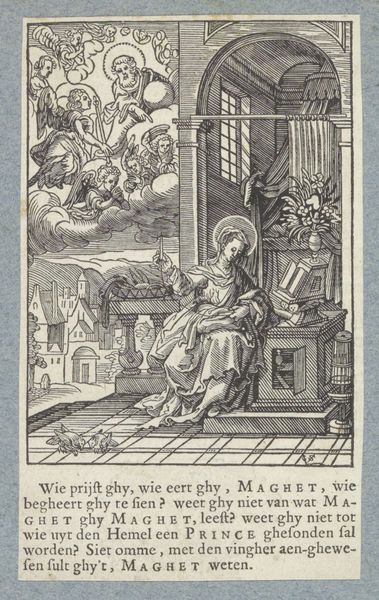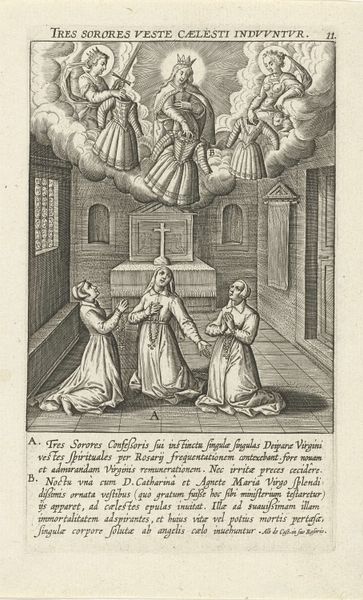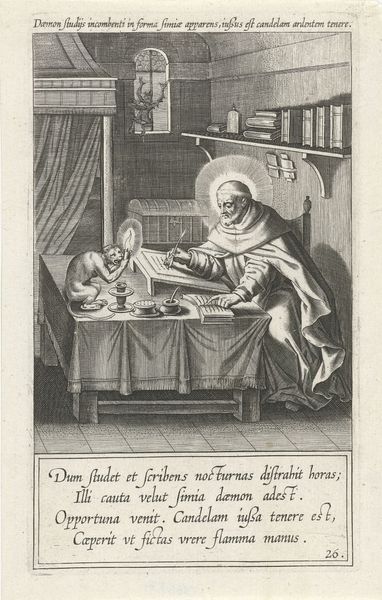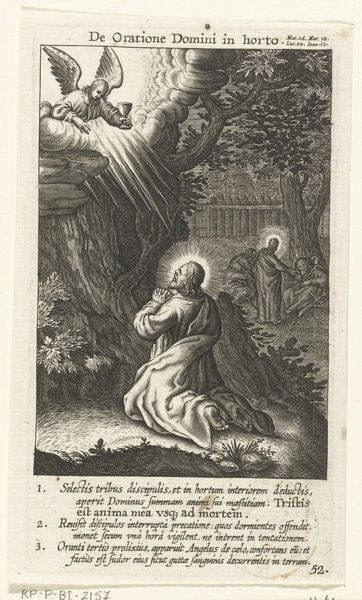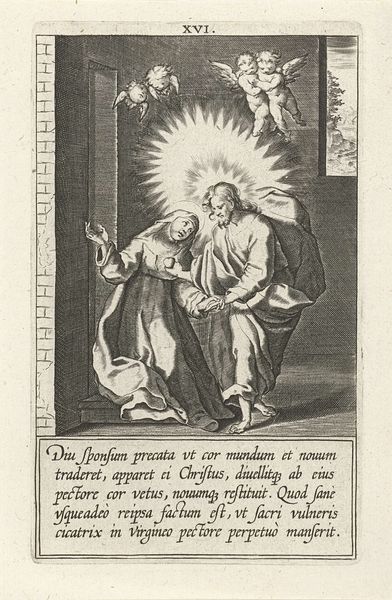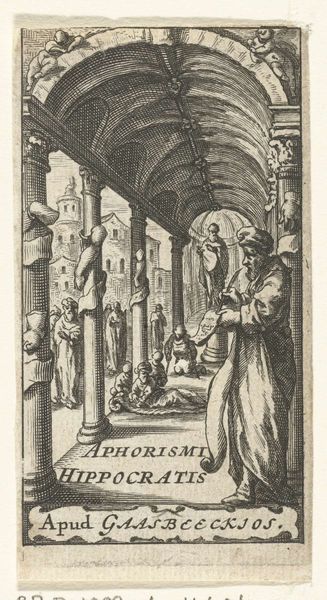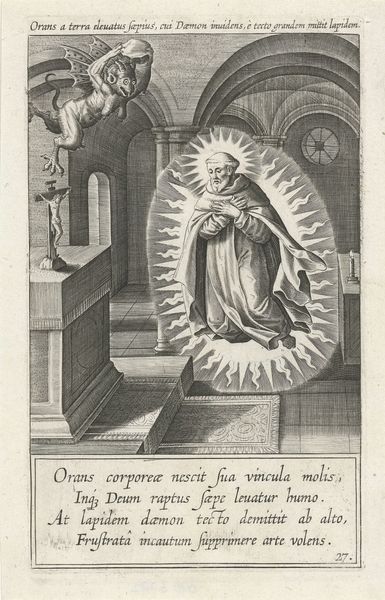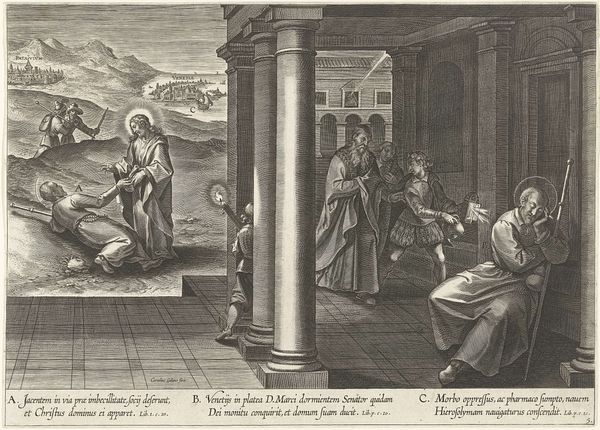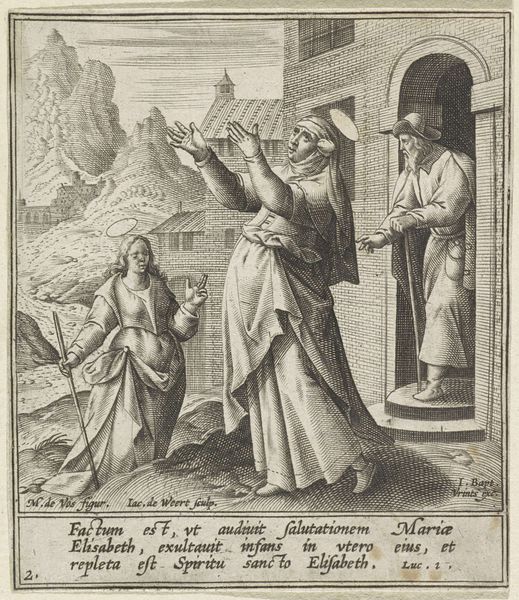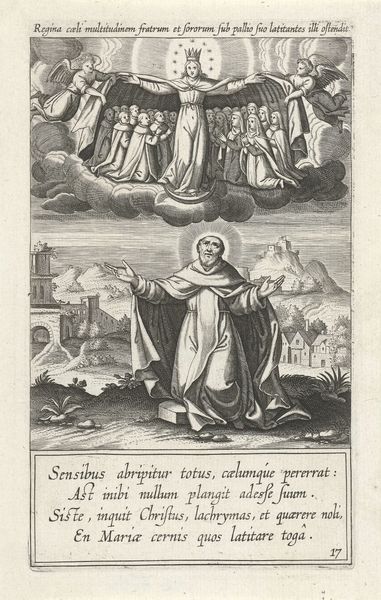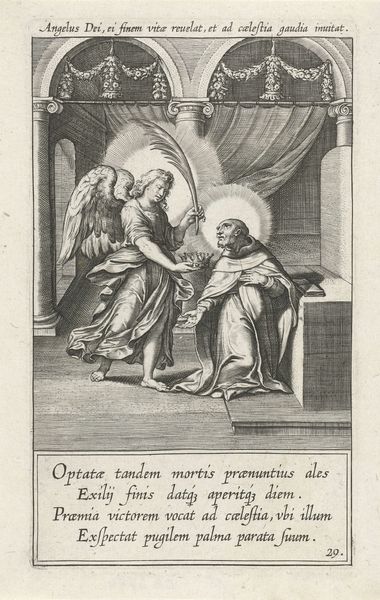
print, engraving
#
baroque
# print
#
figuration
#
history-painting
#
engraving
Dimensions: height 150 mm, width 90 mm
Copyright: Rijks Museum: Open Domain
Editor: Here we have Cornelis Galle I’s engraving, "Christus vergiet zijn bloed over de stad Rome," created in 1603. The stark contrast and detailed lines create a very dramatic effect. I'm immediately struck by how the composition seems divided into earthly and divine realms. What do you make of its structure? Curator: The division you observe is precisely where the formal interest lies. Consider the architectonic arrangement: a tripartite division structured by a strong vertical axis created by the doorway. The upper register depicts a celestial event, visually dominating the architectural space with swirling cloud formations, contrasted with the stable, horizontal planes in the foreground depicting Rome. Editor: So, the balance between the flowing clouds and the rigid city is significant? Curator: Exactly. Observe how the artist uses line to distinguish these realms. Above, we see dynamic, almost frantic, hatching that defines the divinity's form and action. This contrasts with the more regimented lines used to depict architectural forms that signify human creation, a deliberate employment of texture and form. It is the juxtaposition, that is so potent. Editor: The interplay of texture really guides the eye. It's also interesting how the figure on the ground is situated in between these two spaces, a bridging device maybe? Curator: A bridging device, quite right. Note, the artist employs the architectural device of the doorway not simply as opening into real space, but to imply the convergence of realms—one earthly, the other, divine. This allows Galle to propose a relationship between human action and divine will, presented within a self-contained aesthetic system. Editor: I see how a formal analysis illuminates those thematic tensions, It shifts how I see the image from just a religious scene to a study in contrasts and relationships within the artwork itself. Curator: Precisely. It's through this meticulous interplay of formal elements that the artwork's intended meaning emerges most effectively.
Comments
No comments
Be the first to comment and join the conversation on the ultimate creative platform.
